995 scholarly books by The Institution of Engineering and Technology and 84
start with C
995 scholarly books by The Institution of Engineering and Technology and 84
995 scholarly books by The Institution of Engineering and Technology
84 start with C start with C
84 start with C start with C
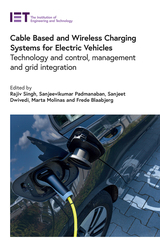
Cable Based and Wireless Charging Systems for Electric Vehicles
Technology and control, management and grid integration
Rajiv Singh
The Institution of Engineering and Technology, 2021
Electric vehicles (EV), are being hailed as part of the solution to reducing urban air pollution and noise, and staving off climate change. Their success hinges on the availability and reliability of fast and efficient charging facilities, both stationary and in-motion. These in turn depend on appropriate integration with the grid, load and outage management, and on the mitigation of loads using renewable energy and storage. Charging management to preserve the battery will also play a key role.
[more]
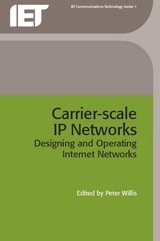
Carrier-Scale IP Networks
Designing and operating Internet networks
Peter Willis
The Institution of Engineering and Technology, 2001
Communications networks are now dominated by Internet protocol (IP) technologies. Every aspect of networking, from access to the core network to the surrounding operational support systems, has been radically affected by the rapid development of IP technologies.
[more]
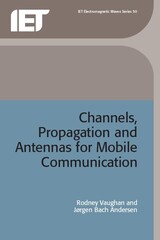
Channels, Propagation and Antennas for Mobile Communications
Rodney Vaughan
The Institution of Engineering and Technology, 2003
Written by two leading experts in the field, this exceptional book introduces the reader to the principles, theory and applications of physical layer wireless/mobile communications. In the area of wireless, the antennas, propagation and the radio channel used are inter-related; this book offers an explanation of that relationship, which is fundamental to the development of systems with high spectral efficiency.
[more]
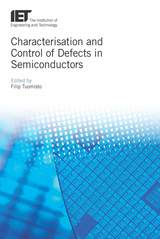
Characterisation and Control of Defects in Semiconductors
Filip Tuomisto
The Institution of Engineering and Technology, 2020
Understanding the formation and introduction mechanisms of defects in semiconductors is essential to understanding their properties. Although many defect-related problems have been identified and solved over the past 60 years of semiconductor research, the quest for faster, cheaper, lower power, and new kinds of electronics generates an ongoing need for new materials and properties, and so creates new defect-related challenges.
[more]
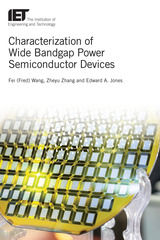
Characterization of Wide Bandgap Power Semiconductor Devices
Fei Wang
The Institution of Engineering and Technology, 2018
At the heart of modern power electronics converters are power semiconductor switching devices. The emergence of wide bandgap (WBG) semiconductor devices, including silicon carbide and gallium nitride, promises power electronics converters with higher efficiency, smaller size, lighter weight, and lower cost than converters using the established silicon-based devices. However, WBG devices pose new challenges for converter design and require more careful characterization, in particular due to their fast switching speed and more stringent need for protection.
[more]
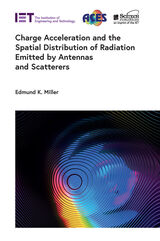
Charge Acceleration and the Spatial Distribution of Radiation Emitted by Antennas and Scatterers
Edmund K. Miller
The Institution of Engineering and Technology, 2022
Given that charge acceleration is the cause of all electromagnetic radiation, the question arises about where such acceleration occurs on objects typically modelled and analysed by electromagnetic engineers. Charge acceleration, as the cause of radiation from these typical kinds of objects (antennas, radars etc) is examined in this book on a quantitative basis.
[more]
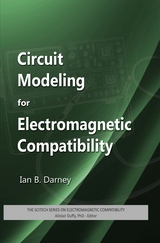
Circuit Modeling for Electromagnetic Compatibility
Ian B. Darney
The Institution of Engineering and Technology, 2013
Very simply, electromagnetic interference (EMI) costs money, reduces profits, and generally wreaks havoc for circuit designers in all industries. This book shows how the analytic tools of circuit theory can be used to simulate the coupling of interference into, and out of, any signal link in the system being reviewed. The technique is simple, systematic and accurate. It enables the design of any equipment to be tailored to meet EMC requirements.Every electronic system consists of a number of functional modules interconnected by signal links and power supply lines. Electromagnetic interference can be coupled into and out of every conductor. A review of the construction of the wiring assemblies and the functions of the signals they carry will allow critical links to be identified. Circuit modeling can be used to simulate the electromagnetic coupling mechanism of each critical link, allowing its performance to be analyzed and compared with the formal requirements. Bench testing during the development of any product will allow any interference problem to be identified and corrected, long before the manufactured unit is subjected to formal testing. Key Features: A fully outlined, systematic and dramatically simplified process of designing equipment to meet EMC requirements; Focuses on simplifications which enable electrical engineers to singularly handle EMC problems; Helps minimize time-to-market of new products and reduces the need for costly and time-consuming modifications; Outlines how general purpose test equipment (oscilloscopes and signal generators) can be used to validate and refine any model; Discusses how to use Mathcad or MATLAB® to perform analysis and assessment.
[more]
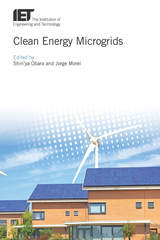
Clean Energy Microgrids
Shin'ya Obara
The Institution of Engineering and Technology, 2017
Microgrids are electric power grids composed of loads and distributed energy resources which provide electricity to villages, university campuses and other entities usually smaller than cities which are capable of operating independently from the larger grid if necessary. Such systems are gaining importance in times of rising shares of renewable power and desire for energy resilience.
[more]

Clean Energy
Past to future
Peter Tavner
The Institution of Engineering and Technology, 2024
Clean energy provision and usage has a long history from an engineering perspective. This perspective can help understanding past and current developments at a time of increasing concern about climate change. Over many hundreds of years human beings have been extracting energy from their environment in various ways, many of which could also be acceptable in the future for achieving a lower energy carbon footprint.
[more]
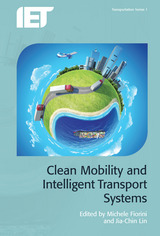
Clean Mobility and Intelligent Transport Systems
Michele Fiorini
The Institution of Engineering and Technology, 2015
This book provides an overview of current topics in intelligent and green transportation on land, sea and in flight, with contributions from an international team of leading experts. A wide range of chapters discuss: the importance of Intelligent Transport Systems (ITS); ICT for intelligent public transport systems; ITS and freight transport; energy-efficient and real-time database management techniques for wireless sensor networks; proactive safety - cooperative collision warning for vehicles; electronic toll collection systems; business models and solutions for user-centered intelligent transport systems; digital infrastructures for increased safety, efficiency and environmental sustainability in shipping logistics; integrated visual information for maritime surveillance; automatic identification system (AIS) AIS signal radiolocation, tracking and verification; the impact of satellite AIS to the environmental challenges of modern shipping; how green is e-Navigation?; optimal ship operation: monitoring technology of ship overall heat balance; regulation of ship-source pollution through international convention regimes; foresight application for the transport sector; and trends in aeronautical air ground communications.
[more]
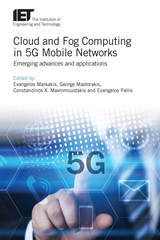
Cloud and Fog Computing in 5G Mobile Networks
Emerging advances and applications
Evangelos Markakis
The Institution of Engineering and Technology, 2017
Cloud computing is a key trend in computing and networking. Now diffused among end-users devices in mobile and wireline networks, the cloud is becoming the "fog". This book presents frameworks and schemes that use devices from end-users or near-users to carry out storage, communication, computation and control in the network. These novel approaches support the Internet of Things, the efficient provision of heterogeneous 5G mobile services, as well as emerging applications over future wireless network architectures. Elaborating on the emerging mobile networking paradigms for the 2020 5G timeframe, this book presents new connectivity services that are highly scalable and programmable in terms of speed, capacity, security, reliability, availability, latency and impact on battery life. Finally, the book discusses recent and new developments, prompting future directions on the theories, practices, standards and strategies related to 5G mobile systems.
[more]
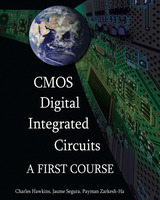
CMOS Digital Integrated Circuits
A first course
Charles Hawkins
The Institution of Engineering and Technology, 2013
This undergraduate textbook for electrical and computer engineering students is dedicated solely to digital CMOS electronics. It covers many of the topics of graduate level textbooks, but in an introductory style specifically crafted (and course tested) for undergraduates. Students will not need a prerequisite in analog electronics, allowing instructors flexibility in course scheduling. This book blends the academic and industrial experience of the authors to define a base of electronics instruction for the CMOS chip industry.
[more]
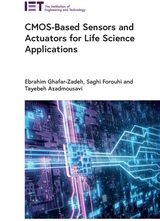
CMOS-Based Sensors and Actuators for Life Science Applications
Ebrahim Ghafar-Zadeh
The Institution of Engineering and Technology, 2024
Emerging complementary metal-oxide semiconductor (CMOS) technologies and their ongoing downscaling trend have opened an avenue to developing integrated systems for life sciences. They offer great advantages for the monolithic integration of several active elements, and the implementation of millions of biosensors along with their transducers and readout circuits on a single chip. Benefits include the ability to make highly dense systems with high signal-to-noise ratios (SNRs), good accessibility and reliability. Moreover, the huge investment in CMOS foundries and the possibility of the batch production of various devices using CMOS have established it as an economical technology appropriate for the fabrication of affordable platforms for end-users. All these features make CMOS electronics a valuable technology for the implementation of integrated bio-systems such as lab-on-chips (LoCs) and point-of-care (PoC) devices.
[more]
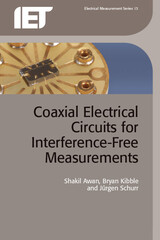
Coaxial Electrical Circuits for Interference-Free Measurements
Shakil Awan
The Institution of Engineering and Technology, 2011
The authors have between them more than 60 years of experience in making electrical measurements in National Measurement Laboratories. These laboratories are the source of measurement standards and techniques for science and engineering and are dedicated to maintaining the international system of units (SI) by establishing and disseminating the values of measurement standards with the lowest possible uncertainty. Careful attention to detail is required in designing measurement systems that eliminate electrical interference and are as simple and as close to first principles as possible. This book draws on their experience by offering guidance and best practice for designing sensitive electrical measurement circuits.
[more]

Code of Practice
Competence for Safety Related Systems Practitioners
The Institution of Engineering and Technology
The Institution of Engineering and Technology, 2017
This Code of Practice is designed to help companies assess and maintain the competence of their engineering staff particularly in safety critical areas and industries. It sets out the competencies expected and evidence required to prove competence in specific tasks and helps organisations create schemes for monitoring and measuring the competencies of its employees. Human error is still recognised as the most frequent cause of problems and the field of safety critical systems and functional safety continues to develop along with the complexity of systems.
[more]

Code of Practice for Building Automation and Control Systems
The Institution of Engineering and Technology
The Institution of Engineering and Technology, 2020
Within the modern built environment, advanced engineering systems allow us to go about our daily lives in a relative degree of safety, comfort and security. Often, we do not give too much thought about what is happening behind the scenes.
[more]

Code of Practice for Connected Systems Integration in Buildings
IET Standards TC4.1 Connected Systems Integration
The Institution of Engineering and Technology, 2016
The Code of Practice for Connected Systems Integration in Buildings aims to promote good practice in the specification, design and integration of connected systems in buildings, as well as providing a reference to practitioners on design, integration practice and technological considerations working to meet key functionality and customer requirements.
[more]

Code of Practice for Cyber Security in the Built Environment
The Institution of Engineering and Technology
The Institution of Engineering and Technology, 2014
This Code of Practice explains why and how cyber security should be considered throughout a building's lifecycle and explains good practice, focusing on building-related systems and all connections to the wider cyber environment.
[more]

Code of Practice for Electric Vehicle Charging Equipment Installation
The Institution of Engineering and Technology
The Institution of Engineering and Technology, 2023
This well established and authoritative IET Code of Practice provides a clear explanation of electric vehicle charging equipment and installation. It sets out the considerations and planning needed in advance and the necessary physical and electrical requirements during the installation process. It also details what needs to be considered when undertaking electrical work on charging equipment in various different locations - such as domestic dwellings, on-street locations, and commercial and industrial premises.
[more]

Code of Practice for Electric Vehicle Charging Equipment Installation
The Institution of Engineering and Technology
The Institution of Engineering and Technology, 2020
This Code of Practice provides a clear overview of EV charging equipment, as well as setting out the considerations needed prior to installations and the necessary physical and electrical installation requirements. It also details what needs to be considered when installing electric vehicle charging equipment in various different locations - such as domestic dwellings, on-street locations, and commercial and industrial premises.
[more]

Code of Practice for Electric Vehicle Charging Equipment Installation
The Institution of Engineering and Technology
The Institution of Engineering and Technology, 2018
This Code of Practice provides a clear overview of EV charging equipment, as well as setting out the considerations needed prior to installation and the necessary physical and electrical installation requirements. It also details what needs to be considered when installing electric vehicle charging equipment in various different locations - such as domestic dwellings, on-street locations, and commercial and industrial premises.
[more]

Code of Practice for Electric Vehicle Charging Equipment Installation
The Institution of Engineering and Technology
The Institution of Engineering and Technology, 2015
The Code of Practice for Electric Vehicle Charging Equipment Installation, 2nd Edition has been updated to align with the current requirements of BS 7671. This includes updated guidance on the electrical installation requirements of BS 7671:2008 Amendment 2 (Section 722 Electric vehicle charging installations) published in September 2013 and Amendment 3 published in January 2015.
[more]

Code of Practice for Electrical Energy Storage Systems
The Institution of Engineering and Technology
The Institution of Engineering and Technology, 2024
Electrical Energy Storage Systems (EESS) provide storage of electrical energy so that it can be used later. EESS may be installed for a variety of reasons, for example increasing the 'self-consumption' of buildings fitted with renewable energy systems; arbitrage services; ancillary services and providing a back-up or alternative power supply.
[more]

Code of Practice for Electrical Energy Storage Systems
The Institution of Engineering and Technology
The Institution of Engineering and Technology, 2021
Electrical Energy Storage Systems (EESS) provide storage of electrical energy so that it can be used later. EESS may be installed for a variety of reasons, for example increasing the 'self-consumption' of buildings fitted with renewable energy systems; arbitrage services; ancillary services and providing a back-up or alternative power supply.
[more]

Code of Practice for Electrical Energy Storage Systems
The Institution of Engineering and Technology
The Institution of Engineering and Technology, 2017
The purpose of this Code of Practice is to provide a reference to practitioners on the safe, effective and competent application of electrical energy storage systems.
[more]

Code of Practice for Electrical Safety Management
The Institution of Engineering and Technology
The Institution of Engineering and Technology, 2023
The aim of this Code of Practice is to provide good practice guidance to enable individuals and their organisations to have a level of knowledge and understanding to manage the risks associated with an electrical system. There are many technical publications that provide guidance on certain aspects of electrical safety but not in a way that provides a process for managing electrical safety.
[more]

Code of Practice for Electrical Safety Management
The Institution of Engineering and Technology
The Institution of Engineering and Technology, 2013
The aim of the Code of Practice for Electrical Safety Management is to provide good practice guidance to enable individuals and their organisations to have a level of knowledge and understanding to manage the risks associated with an electrical system. There are many technical publications that provide guidance on certain aspects of electrical safety but not in a way that provides a process for managing electrical safety.
[more]

Code of Practice for Grid-connected Solar Photovoltaic Systems
The Institution of Engineering and Technology
The Institution of Engineering and Technology, 2023
This Code of Practice sets out the requirements for the design, specification, installation, commissioning, operation, and maintenance of grid-connected solar photovoltaic (PV) systems.
[more]

Code of Practice for Grid-connected Solar Photovoltaic Systems
Design, specification, installation, commissioning, operation and maintenance
The Institution of Engineering and Technology
The Institution of Engineering and Technology, 2015
This Code of Practice sets out the requirements for the design, specification, installation, commissioning, operation and maintenance of grid-connected solar photovoltaic (PV) systems installed in the UK. It is aimed at ensuring safe, effective and competently installed solar PV systems.
[more]

Code of Practice for In-service Inspection and Testing of Electrical Equipment
The Institution of Engineering and Technology
The Institution of Engineering and Technology, 2020
This is the 5th edition of the IET's Code of Practice for In-service Inspection and Testing of Electrical Equipment.
[more]

Code of Practice for In-service Inspection and Testing of Electrical Equipment
The Institution of Engineering and Technology
The Institution of Engineering and Technology, 2012
This is the 4th edition of the IET's Code of Practice for In-service Inspection and Testing of Electrical Equipment.
[more]

Code of Practice for Low and Extra Low Voltage Direct Current Power Distribution in Buildings
The Institution of Engineering and Technology
The Institution of Engineering and Technology, 2015
Low voltage direct current distribution of power within buildings offers advantages over the traditional mains power supply solutions for an increasing number of services.
[more]

Code of Practice for the Application of LED Lighting Systems
The Institution of Engineering and Technology
The Institution of Engineering and Technology, 2021
LED lighting is a fast-developing technology with many advantages over filament and gas discharge lighting systems. However, inappropriate design, application and poor-quality installation of LED lighting systems could negate these advantages and result in inadequate lighting, failure to meet lifetime performance expectations, potential public health and safety issues or even interference with other technology due to poor systems integration.
[more]

Code of Practice for the Application of LED Lighting Systems
The Institution of Engineering and Technology
The Institution of Engineering and Technology, 2014
LED lighting is a fast-developing technology that is becoming more popular as people begin to realise the advantages it provides, such as energy efficiency, controllability and longevity. However, poor quality installation of LED lighting systems could negate these advantages and result in inadequate lighting, failure to meet lifetime performance expectations, potential public health and safety issues or even interference with other technology due to poor systems integration.
[more]
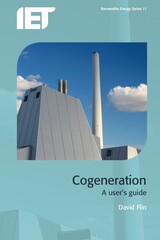
Cogeneration
A user's guide
David Flin
The Institution of Engineering and Technology, 2009
If there are two phrases we have come to know very well, they are 'environmental awareness' and 'credit crunch'. The world is looking for ways to decrease the emission of CO2 into the atmosphere, without incurring major costs in doing so. By increasing efficiencies up to about 90 per cent using well-established and mature technologies, cogeneration represents the best option for short-term reductions in CO2 emission levels.
[more]
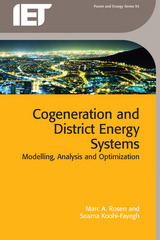
Cogeneration and District Energy Systems
Modelling, analysis and optimization
Marc A. Rosen
The Institution of Engineering and Technology, 2016
District energy (DE) systems use central heating and/or cooling facilities to provide heating and/or cooling services for communities and can be particularly beneficial when integrated with cogeneration plants for electricity and heat. This book provides information on district energy and cogeneration technologies, and the systems that combine them, with a focus on their modelling, analysis and optimization.
[more]
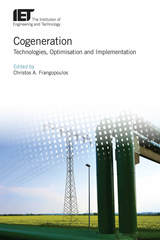
Cogeneration
Technologies, optimization and implementation
Christos A. Frangopoulos
The Institution of Engineering and Technology, 2017
Cogeneration, also called combined heat and power (CHP), refers to the use of a power station to deliver two or more useful forms of energy, for example, to generate electricity and heat at the same time. All conventional, fuel-based plants generate heat as by-product, which is often carried away and wasted. Cogeneration captures part of this heat for delivery to consumers and is thus a thermodynamically efficient use of fuel, and contributes to reduction of carbon emissions. This book provides an integrated treatment of cogeneration, including a tour of the available technologies and their features, and how these systems can be analysed and optimised.
[more]
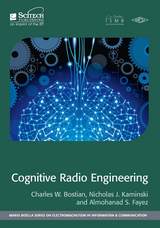
Cognitive Radio Engineering
Charles W. Bostian
The Institution of Engineering and Technology, 2016
A cognitive radio is a transceiver which is aware of its environment, its own technical capabilities and limitations, and those of the radios with which it may communicate; is capable of acting on that awareness and past experience to configure itself in a way that optimizes its performance; and is capable of learning from experience. In a real sense, a cognitive radio is an intelligent communications system that designs and redesigns itself in real time.
[more]
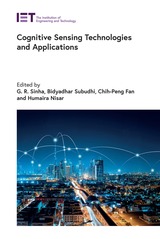
Cognitive Sensing Technologies and Applications
G.R. Sinha
The Institution of Engineering and Technology, 2023
Cognitive sensing systems combined with IoTs and smart technologies are used in countless applications such as industrial robotics, computer-aided diagnosis, brain-computer interface (BCI), human-computer interaction (HCI), telemedicine, driverless cars and smart energy systems.
[more]
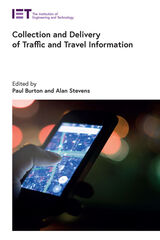
Collection and Delivery of Traffic and Travel Information
Paul Burton
The Institution of Engineering and Technology, 2021
Technologies for traffic and travel information (TTI) have been evolving rapidly in recent years. This book offers an overview of three generations of TTI technology, beginning with the first generation of human to human information transmission. The second generation incorporated machine to human information exchange, with the development of classification and transmission protocols such as RDS-TMC and TPEG. A third generation of machine to machine communication is now emerging, disrupting TTI technology and creating the need for this new reference work, which covers gathering information from automated sensors, its digital processing and transmission, and its use by increasingly intelligent agents and vehicles.
[more]

Commentary on IET Wiring Regulations 17th Edition (BS 7671
2008+A3:2015 Requirements for Electrical Installations)
Paul Cook
The Institution of Engineering and Technology, 2017
This book is a complete guide to the IET Wiring Regulations and the important changes in Amendment 3 to BS 7671:2008.
[more]

Common-Channel Signalling
Richard J. Manterfield
The Institution of Engineering and Technology, 1991
Signalling is the life-blood of telecommunications and common-channel signalling is the key to providing flexible and cost-effective services to customers. This book commences with the basics of signalling and then unveils the complexities of common-channel signalling systems. The book is written to appeal to a wide range of readership. The novice can build up a comprehensive understanding of signalling by systematically making progress through the book. Experts in telecommunications who wish to understand the specialist subject can select appropriate text, guided by the chapter summaries. Experts in signalling will find the book useful in extending their knowledge of a very broad subject. The glossary cuts through the maze of jargon.
[more]
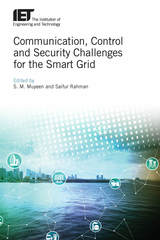
Communication, Control and Security Challenges for the Smart Grid
S.M. Muyeen
The Institution of Engineering and Technology, 2017
The Smart Grid is a modern electricity grid allowing for distributed, renewable intermittent generation, partly owned by consumers. This requires advanced control and communication technologies in order to provide high quality power supply and secure generation, transmission and distribution. This book outlines these emerging technologies.
[more]
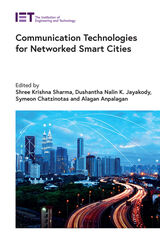
Communication Technologies for Networked Smart Cities
Shree Krishna Sharma
The Institution of Engineering and Technology, 2021
One of the crucial challenges for future smart cities is to devise a citywide network infrastructure capable of effectively guaranteeing resource-efficient and reliable communications while managing the complexity of heterogeneous devices and access technologies. This edited book highlights and showcases state of the art research and innovations in 5G and beyond wireless communications technologies for connected smart cities. The main objectives of this work include the exploration of recent advances and application potentials of various communication technologies as promising enablers for future networked smart cities, the investigation of design-specific issues for the integration of different architectural components of smart cities, and addressing various challenges and identifying opportunities in terms of interoperability of potential solutions.
[more]

Communications
An international history of the formative years
Russell W. Burns
The Institution of Engineering and Technology, 2004
Communications: An international history of the formative years traces the evolution of communications from 500 BC, when fire beacons were used for signalling, to the 1940s, when high definition television systems were developed for the entertainment, education and enlightenment of society. The book does not simply provide a chronicle of dates and events, nor is it a descriptive catalogue of devices and systems. Rather, it discusses the essential factors - technical, political, social, economic and general - that enabled the evolution of modern communications. The author has taken a contextual approach to show the influence of one discipline upon another, and the unfolding story has been widely illustrated with contemporary quotations, allowing the progress of communications to be seen from the perspective of the times and not from the standpoint of a later generation.
[more]
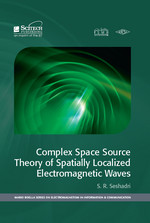
Complex Space Source Theory of Spatially Localized Electromagnetic Waves
S.R. Seshadri
The Institution of Engineering and Technology, 2014
This book begins with an essential background discussion of the many applications and drawbacks for paraxial beams, which is required in the treatment of the complex space theory of spatially localized electromagnetic waves. The author highlights that there is a need obtain exact full-wave solutions that reduce to the paraxial beams in the appropriate limit. Complex Space Source Theory of Spatially Localized Electromagnetic Waves treats the exact full-wave generalizations of all the basic types of paraxial beam solutions. These are developed by the use of Fourier and Bessel transform techniques and the complex space source theory of spatially localized electromagnetic waves is integrated as a branch of Fourier optics. Two major steps in the theory are described as: 1) the systematic derivation of the appropriate virtual source in the complex space that produces the required full wave from the paraxial beam solution and 2) the determination of the actual secondary source in the physical space that is equivalent to the virtual source in the complex space.
[more]
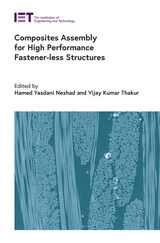
Composites Assembly for High Performance Fastener-less Structures
Hamed Yazdani Nezhad
The Institution of Engineering and Technology, 2022
Composites Assembly for High Performance Fastener-less Structures provides a broad and balanced span of information, covering both fundamentals and applications across academic and industrial state-of-the-art research and development on assembly, joining, inspection and repair of high-performance structures made from fibre-reinforced polymer composites and multifunctional nanocomposites. This knowledge is essential for the realisation of critical features in assembly and joining evolving procedures (across their design, development and performance analysis) in such multi-material systems, but also for the through-life maintenance of composite components used in a range of engineering applications such as those composite structures utilised for wind turbine blades, automotive parts, aircraft wings and fuselage. The book also addresses the non-destructive testing methods used to detect damage occurring in composite joints, which are essential to decide if the repair is needed.
[more]
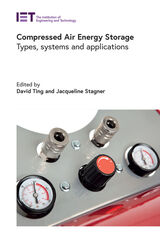
Compressed Air Energy Storage
Types, systems and applications
David S-K. Ting
The Institution of Engineering and Technology, 2021
The intermittency of renewable energy sources is making increased deployment of storage technology necessary. Technologies are needed with high round-trip efficiency and at low cost to allow renewables to undercut fossil fuels. The cost of lithium batteries has fallen, but producing them comes with a substantial carbon footprint, as well as a cost to the local environment.
[more]

Computer Control of Real-Time Processes
S. Bennett
The Institution of Engineering and Technology, 1990
This book provides an introduction to many aspects of computer control. It covers techniques or control algorithm design and tuning of controllers; computer communications; parallel processing; and software design and implementation. The theoretical material is supported by case studies covering power systems control, robot manipulators, liquid natural as vaporisers, batch control of chemical processes; and active control of aircraft.
[more]
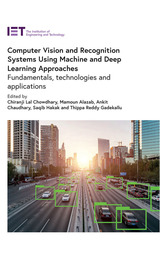
Computer Vision and Recognition Systems Using Machine and Deep Learning Approaches
Fundamentals, technologies and applications
Chiranji Lal Chowdhary
The Institution of Engineering and Technology, 2021
Computer vision is an interdisciplinary scientific field that deals with how computers obtain, store, interpret and understand digital images or videos using artificial intelligence based on neural networks, machine learning and deep learning methodologies. They are used in countless applications such as image retrieval and classification, driving and transport monitoring, medical diagnostics and aerial monitoring.
[more]
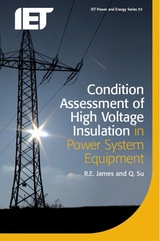
Condition Assessment of High Voltage Insulation in Power System Equipment
R.E. James
The Institution of Engineering and Technology, 2008
The book introduces the reader to the major components of a high voltage system and the different insulating materials applied in particular equipments. During a review of these materials, measurable properties suitable for condition assessment are identified. Analyses are included of some of the insulation fault scenarios that may occur in power equipment. The basic facilities for carrying out tests on the internal and external insulation structures at high and low voltages are described. Tests and measurements according to specifications, on-site requirements and research investigations are considered. Advances in the application of digital techniques for detection and analyses of partial discharges are discussed and methods in use, or under development, for service condition monitoring are described. These include the utilization of new sensors, the solution of online problems associated with noise rejection and the adaptation of artificial intelligence techniques for incipient fault diagnosis.
[more]
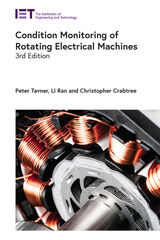
Condition Monitoring of Rotating Electrical Machines
Peter Tavner
The Institution of Engineering and Technology, 2020
Condition monitoring of engineering plants has increased in importance as engineering processes have become increasingly automated. However, electrical machinery usually receives attention only at infrequent intervals when the plant or the electricity generator is shut down. The economics of industry have been changing, placing ever more emphasis on the importance of reliable operation of the plants. Electronics and software in instrumentation, computers, and digital signal processors have improved our ability to analyse machinery online. Condition monitoring is now being applied to a range of systems from fault-tolerant drives of a few hundred watts to machinery of a few hundred MW in major plants.
[more]
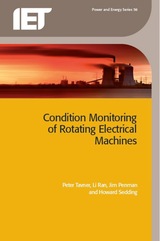
Condition Monitoring of Rotating Electrical Machines
Peter Tavner
The Institution of Engineering and Technology, 2008
Condition monitoring of engineering plant has increased in importance as engineering processes are automated and manpower is reduced. However, electrical machinery receives attention only at infrequent intervals when plant is shut down and the application of protective relays to machines has also reduced operator surveillance.
[more]

Conduction and Induction Heating
E.J. Davies
The Institution of Engineering and Technology, 1990
This book aims at a theoretical and practical treatment of both conduction and induction heating. They share a common theory, one being the 'mirror image' of the other, and so one gets two for the price of one.
[more]

Continuing Professional Development
A practical approach
John Lorriman
The Institution of Engineering and Technology, 1997
Managing your CPD as a professional engineer.
[more]

Continuous Time Controller Design
R. Balasubramanian
The Institution of Engineering and Technology, 1989
This book covers theoretical methods for the design of continuous time controllers for linear multivariate systems. It is intended for use by those wishing to build on a first course in control systems, either to expand their knowledge as practising engineers or as postgraduate students doing higher degrees in control engineering.
[more]
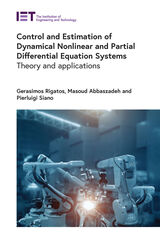
Control and Estimation of Dynamical Nonlinear and Partial Differential Equation Systems
Theory and applications
Gerasimos Rigatos
The Institution of Engineering and Technology, 2022
Robotic and mechatronic systems, autonomous vehicles, electric power systems and smart grids, as well as manufacturing and industrial production systems can exhibit complex nonlinear dynamics or spatio-temporal dynamics which need to be controlled to ensure good functioning and performance.
[more]
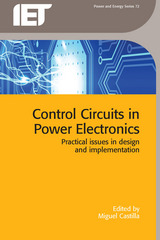
Control Circuits in Power Electronics
Practical issues in design and implementation
Miguel Castilla
The Institution of Engineering and Technology, 2016
Control circuits are a key element in the operation and performance of power electronics converters. This book describes practical issues related to the design and implementation of these control circuits, with a focus on the presentation of the state-of-the-art control solutions, including circuit technology, design techniques, and implementation issues.
[more]

Control Engineering Solutions
A practical approach
P. Albertos
The Institution of Engineering and Technology, 1997
This book collects together in one volume a number of control engineering solutions, intended to be representative of solutions applicable to a broad class of control problems, and outlines possible alternative approaches to finding them. This is neither a control theory book nor a handbook of laboratory experiments, although it includes both the basic theory of control and practical laboratory set-ups to illustrate the solutions proposed.
[more]
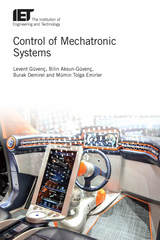
Control of Mechatronic Systems
Levent Güvenç
The Institution of Engineering and Technology, 2017
This book introduces researchers and advanced students with a basic control systems background to an array of control techniques which they can easily implement and use to meet the required performance specifications for their mechatronic applications. It is the result of close to two decades of work of the authors on modeling, simulating and controlling different mechatronic systems from the motion control, automotive control and micro and nano-mechanical systems control areas. The methods presented in the book have all been tested by the authors and a very large group of researchers, who have produced practically implementable controllers with highly successful results.
[more]
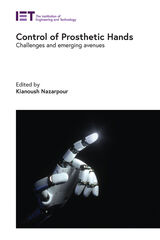
Control of Prosthetic Hands
Challenges and emerging avenues
Kianoush Nazarpour
The Institution of Engineering and Technology, 2021
This edited book brings together research from laboratories across the world, in order to offer a global perspective on advances in prosthetic hand control. State-of-the-art control of prosthetics in the laboratory and clinical spaces are presented and the challenges discussed, and the effect of user training on control of prosthetics to evaluate the translational efficacy and value for the end-user is highlighted.
[more]
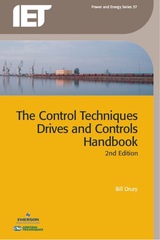
The Control Techniques Drives and Controls Handbook
Bill Drury
The Institution of Engineering and Technology, 2009
Variable speed drives and the associated electrical motors play a central role in industry as well as the buildings in which we live, work and are entertained. They are arguably the most potent tool we have in the quest to save energy and thereby reduce our carbon footprint. Their rate of development has been rapid and today's product is in many ways unrecognisable from its ancestors of even twenty years ago. Development continues apace for the components used in the products, the products themselves and the ways in which the products are used.
[more]
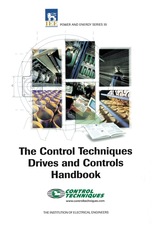
Control Techniques Drives and Controls Handbook
Bill Drury
The Institution of Engineering and Technology, 2001
This book contains a great deal of practical information for drives and industrial engineers who use motors and drives. It is a comprehensive guide to the technology underlying drives and motors. It contains sufficient theory to give both user and student an insight into the design of these components and thereby the constraints and opportunities that exist.
[more]
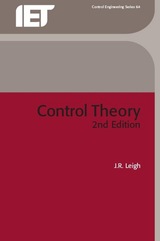
Control Theory
J.R. Leigh
The Institution of Engineering and Technology, 2004
Concise highly readable book emphasising the concepts and principles that are prerequisite for understanding both traditional and recent control theory.
[more]
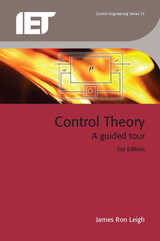
Control Theory
A guided tour
James Ron Leigh
The Institution of Engineering and Technology, 2012
Using clear tutorial examples, this fully updated new edition concentrates on explaining and illustrating the concepts that are at the heart of control theory.
[more]
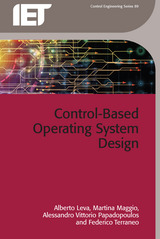
Control-Based Operating System Design
Alberto Leva
The Institution of Engineering and Technology, 2013
Control-Based Operating System Design describes the application of system- and control-theoretical methods to the design of computer operating system components. It argues that computer operating system components should not be first 'designed' and then 'endowed with control', but rather when possible conceived from the outset as controllers, synthesised and assessed in the system-theoretical world of dynamic models, and then realised as control algorithms. Doing so is certainly a significant perspective shift with respect to current practices in operating system design, but the payoff is significant too. In some sense, adopting the suggested attitude means viewing computing systems as cyber-physical ones, where the operating system plays the computational role, the physical elements are the managed resources, and the various (control) functionalities to be realised, interact and co-operate as a network.
[more]
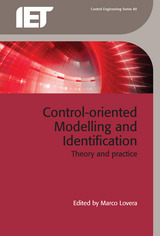
Control-oriented Modelling and Identification
Theory and practice
Marco Lovera
The Institution of Engineering and Technology, 2015
This comprehensive book covers the state-of-the-art in control-oriented modelling and identification techniques. With contributions from leading researchers in the subject, Control-oriented Modelling and Identification: Theory and practice covers the main methods and tools available to develop advanced mathematical models suitable for control system design, including: object-oriented modelling and simulation; projection-based model reduction techniques; integrated modelling and parameter estimation; identification for robust control of complex systems; subspace-based multi-step predictors for predictive control; closed-loop subspace predictive control; structured nonlinear system identification; and linear fractional LPV model identification from local experiments using an H1-based glocal approach.
[more]
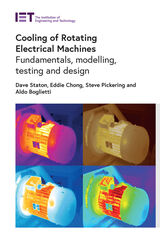
Cooling of Rotating Electrical Machines
Fundamentals, modelling, testing and design
David Staton
The Institution of Engineering and Technology, 2022
Thermal management is an issue with all electrical machines, including electric vehicle drives and wind turbine generators. Excessively high temperatures lead to loss of performance, degradation and deformation of components, and ultimately loss of the system.
[more]
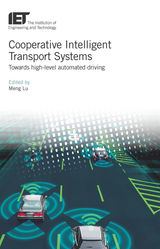
Cooperative Intelligent Transport Systems
Towards high-level automated driving
Meng Lu
The Institution of Engineering and Technology, 2019
Intelligent Transport Systems (ITS) have been a domain of substantial development for more than thirty years, enhancing safety, (energy and fuel) efficiency, comfort, and economic growth. Cooperative Intelligent Transport Systems (C-ITS), also referred to as Connected Vehicles, are a prelude to, and pave the way towards road transport automation. Vehicle connectivity and information exchange will be an important asset for future highly-automated driving. The book provides a comprehensive insight in the state of the art of C-ITS and automated driving, especially addresses the important role of ICT (Information and Communication Technologies) infrastructure, and presents the main achievements (both theory and practice), as well as the challenges in the domain in Europe, the US and Asia/Pacific.
[more]
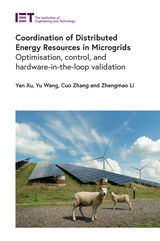
Coordination of Distributed Energy Resources in Microgrids
Optimisation, control, and hardware-in-the-loop validation
Yan Xu
The Institution of Engineering and Technology, 2022
Coordination of Distributed Energy Resources in Microgrids: Optimisation, control, and hardware-in-the-loop validation provides a structured overview of research into techniques for managing microgrids with distributed energy resources (DERs). The DERs including distributed generators, energy storage systems, and flexible loads are posing both challenges and opportunities to microgrids' security, planning, operation, and control. Advanced operation and control techniques are needed to coordinate these components in the microgrids and maintain power quality, as well as keeping the system economically feasible.
[more]

The Correspondence of Michael Faraday
1811-1831, Volume 1
Frank A.J.L. James
The Institution of Engineering and Technology, 1991
Michael Faraday (1791-1867) was one of the most important men of science in nineteenth century Britain. His discoveries of electro-magnetic rotations (1821), and electro-magnetic induction (1831) laid the foundations of the modern electrical industry. His discovery of the magneto-optical effect and of diamagnetism (1845) led him to formulate the field theory of electro-magnetism, which forms one of the cornerstones of modern physics.
[more]

The Correspondence of Michael Faraday
1832-1840, Volume 2
Frank A.J.L. James
The Institution of Engineering and Technology, 1993
Michael Faraday (1791-1867) was one of the most important men of science in nineteenth century Britain. His discoveries of electromagnetic rotations (1821) and electro-magnetic induction (1831) laid the foundations of the modern electrical industry. His discovery of the magneto-optical effect and diamagnetism (1845) led him to formulate the field theory of electro-magnetism, which forms one of the cornerstones of modern physics.
[more]

The Correspondence of Michael Faraday
1841-1848, Volume 3
Frank A.J.L. James
The Institution of Engineering and Technology, 1996
Michael Faraday (1791-1867) was one of the most important men of science in nineteenth century Britain. His discoveries of electromagnetic rotations (1821) and electro-magnetic induction (1831) laid the foundations of the modern electrical industry. His discovery of the magneto-optical effect and diamagnetism (1845) led him to formulate the field theory of electro-magnetism, which forms one of the cornerstones of modern physics.
[more]
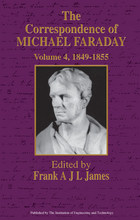
The Correspondence of Michael Faraday
1849-1855, Volume 4
Frank A.J.L. James
The Institution of Engineering and Technology, 1999
Michael Faraday (1791-1867) was one of the most important men of science in nineteenth century Britain. His discoveries of electromagnetic rotations (1821) and electro-magnetic induction (1831) laid the foundations of the modern electrical industry. His discovery of the magneto-optical effect and diamagnetism (1845) led him to formulate the field theory of electro-magnetism, which forms one of the cornerstones of modern physics, and is one of the subjects covered in this volume.
[more]

The Correspondence of Michael Faraday
1855-1860, Volume 5
Frank A.J.L. James
The Institution of Engineering and Technology, 2008
Michael Faraday (1791-1867) was one of the most important men of science in nineteenth century Britain. His discoveries of electro-magnetic rotations (1821) and electro-magnetic induction (1831) laid the foundations of the modern electrical industry. His discovery of the magneto-optical effect and diamagnetism (1845) led him to formulate the field theory of electro-magnetism, which forms one of the cornerstones of modern physics.
[more]

The Correspondence of Michael Faraday
1860-1867, Volume 6
Frank A.J.L. James
The Institution of Engineering and Technology, 2011
Michael Faraday (1791-1867) was one of the most important men of science in nineteenth century Britain. His discoveries of electro-magnetic rotations (1821) and electro-magnetic induction (1831) laid the foundations of the modern electrical industry. His discovery of the magneto-optical effect and diamagnetism (1845) led him to formulate the field theory of electro-magnetism, which forms one of the cornerstones of modern physics. These and a whole host of other fundamental discoveries in physics and chemistry, together with his lecturing at the Royal Institution, his work for the state (including Trinity House), his religious beliefs and his lack of mathematical ability, make Faraday one of the most fascinating scientific figures ever. All these aspects of his life and work and others, such as his health, are reflected in his letters which, in this final volume, cover Faraday's life to his death in August 1867. Also published here are letters that could not be dated and letters that should have been included in volumes one to five but which had not been located when those volumes were published. In total just over 80% of the letters in this volume are previously unpublished. The dominant topic of the 1860s (covered in nearly 40% of the letters) is Faraday's involvement with the lighthouse service relating in particular to his advice to Trinity House and the Board of Trade on matters such as electric light and the controversial issue of fog signals. Also detailed is the complex process by which his various posts were transferred to John Tyndall. Similar issues existed with Faraday's gradual withdrawal from his duties at the Royal Institution, including the misguided attempt to make him President. And, of course, running through many of the letters are comments on his declining health and impending death. Major correspondents include the Astronomer Royal G.B. Airy, the Secretary of Trinity House P.H. Berthon, the Birmingham glassmaker J.T. Chance, the Assistant Secretary of the Board of Trade T.H. Farrer, the German mathematician Julius Plücker, the Cambridge trained mathematical natural philosophers James Clerk Maxwell and William Thomson, Faraday's colleagues at the Royal Institution Henry Bence Jones, John Tyndall and Benjamin Vincent, the Swiss chemist Christian Schoenbein and the astronomer James South.
[more]

Corrugated Horns for Microwave Antennas
P.J.B. Clarricoats
The Institution of Engineering and Technology, 1984
Over the last twenty years Corrugated horns have become widely used as feeds for microwave reflector antennas because of their high efficiency, good pattern symmetry and low cross-polarisation. They are increasingly used in antennas for satellite communications, radar, microwave point to point communications and radio astronomy.
[more]
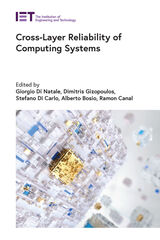
Cross-Layer Reliability of Computing Systems
Giorgio Di Natale
The Institution of Engineering and Technology, 2020
Reliability has always been a major concern in designing computing systems. However, the increasing complexity of such systems has led to a situation where efforts for assuring reliability have become extremely costly, both for the design of solutions for the mitigation of possible faults, and for the reliability assessment of such techniques.
[more]

The Current Comparator
W.J.M. Moore
The Institution of Engineering and Technology, 1988
In 1961, Moore and Miljanic in collaboration with N. L Kusters developed the current comparator, for which a patent was granted in 1964. Since that time they and their associates have applied this technique toward advancing the art of electrical measurement.
[more]
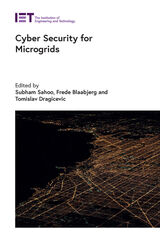
Cyber Security for Microgrids
Subham Sahoo
The Institution of Engineering and Technology, 2022
Microgrids use ICT to intelligently deliver energy and integrate clean generation. They can operate independently from a larger grid and can help to strengthen grid resilience. Applications include remote as well as urban areas, hospitals, and manufacturing complexes. Cybersecurity challenges arise, exposing the microgrids to cyber-attacks, possibly resulting in harm to infrastructure and to people. Research has classified attacks based on confidentiality, integrity, and availability, and most countermeasures focus on specific attacks or on protecting specific components. A global approach is needed combining solutions that can secure the entire system and respond in milliseconds.
[more]
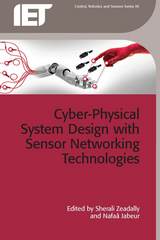
Cyber-Physical System Design with Sensor Networking Technologies
Sherali Zeadally
The Institution of Engineering and Technology, 2016
This is a book written by leading experts in the fields of cyber-physical systems (CPS) and wireless sensor networks (WSN). This book describes how wireless sensor networking technologies can help in establishing and maintaining seamless communications between the physical and cyber systems to enable efficient, secure, reliable acquisition, management, and routing of data.
[more]
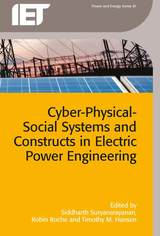
Cyber-Physical-Social Systems and Constructs in Electric Power Engineering
Siddharth Suryanarayanan
The Institution of Engineering and Technology, 2016
Cyber-physical-social systems (CPSS) integrate computing, physical assets, and human networks. Divided into four application areas to the electric grid, this book describes state-of-the-art CPSS in electric power systems, including detailed approaches on social constructs which are a critical aspect of the end-user realm. The book covers:
[more]

Cybersecurity in Emerging Healthcare Systems
Agbotiname Lucky Imoize
The Institution of Engineering and Technology, 2024
Emerging healthcare networks are interconnected physical systems that use cyber technologies for interaction and functionalities. The proliferation of massive Internet of Things (IoT) devices enables remote and distributed access to cutting-edge diagnostics and treatment options in modern healthcare systems. New security vulnerabilities are emerging due to the increasing complexity of the healthcare architecture, in particular, threats to medical devices and critical infrastructure pose significant concerns owing to their potential risks to patient health and safety. In recent times, patients have been exposed to high risks from attacks capable of disrupting critical medical infrastructure, communications facilities, and services, interfering with medical devices, or compromising sensitive user data.
[more]

Cybersecurity in Transport Systems
Martin Hawley
The Institution of Engineering and Technology, 2022
The role of data and information and communication technology (ICT) is growing in all areas of transport, with autonomous vehicles among the most advanced examples. This opens up opportunities for malevolent interference, such as remote-control of vehicles for criminal or terrorist purposes or interruption of increasingly interconnected transport systems. It is therefore imperative that cybersecurity is upgraded and designed into new systems.
[more]
READERS
Browse our collection.
PUBLISHERS
See BiblioVault's publisher services.
STUDENT SERVICES
Files for college accessibility offices.
UChicago Accessibility Resources
home | accessibility | search | about | contact us
BiblioVault ® 2001 - 2024
The University of Chicago Press









